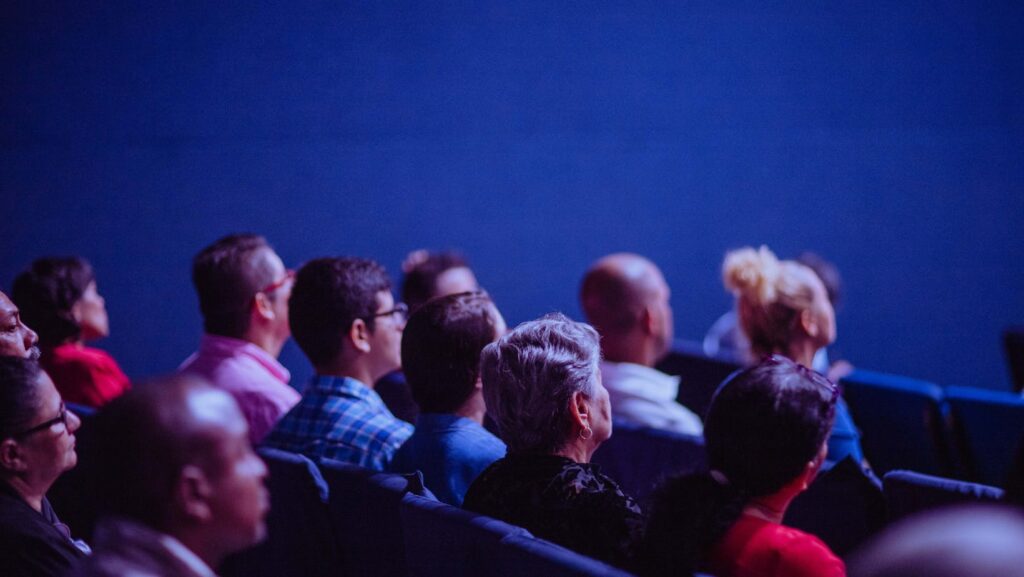Step back in time, into the golden era of cinema, a period that’s etched in the annals of film history. A time when movies weren’t just about special effects and high-tech CGI, but about compelling stories, unforgettable performances, and timeless classics that still resonate today.
Golden Cinema Movies
 Dive deeper into the realm of golden cinema movies, retracing their path from inception to legacy. Unwrap their unique characteristics and significance, and understand the era that celebrated them.
Dive deeper into the realm of golden cinema movies, retracing their path from inception to legacy. Unwrap their unique characteristics and significance, and understand the era that celebrated them.
Golden Cinema Movies refer to films that emerged from the period often considered as the “golden era” of Hollywood, which spanned the 1920s to the 1960s. These films demonstrate unique features, such as intricate storytelling, memorable performances, and, often, innovative filmmaking techniques. They are characterized by their timeless appeal and the manner in which they shaped the landscape of contemporary cinema. Some well-recognized examples include “Casablanca,” “Breakfast at Tiffany’s,” and “Psycho,” embracing genres from romance and drama to suspense and mystery.
Key Characteristics of Golden Cinema Movies
Cinematography and Visual Style
Golden cinema encompasses a distinctive visual style that captures the imagination. Enthralling scenes, shot in black and white, shed light on the brilliance of contrast and shadow play. Films like “Double Indemnity” and “Citizen Kane” glorified these visual elements, making them a staple of the golden era films. Additionally, the advent of color technology saw movies like “Gone with the Wind” and “The Wizard of Oz” embrace vibrant hues, contributing to a richer, more captivating visual experience. Techniques such as long, uninterrupted shots, dramatic lighting effects, and innovative set designs enhanced the storytelling, making these films visually timeless.
Iconic Directors and Actors
 Another notable characteristic lies in the contributions of iconic directors and actors of the era. Directors like Billy Wilder, Orson Welles, and John Ford shaped cinematic narrative with their unique storytelling techniques, garnering global applause. Actors, too, made a significant impact. Humphrey Bogart’s distinct on-screen presence in “Casablanca,” Audrey Hepburn’s captivating performance in “Breakfast at Tiffany’s,” and Marlon Brando’s powerful acting in “A Streetcar Named Desire” exemplify the era’s striking performances. These individuals elevated the films beyond mere entertainment, enhancing the narrative with their charismatic portrayals and sensational acting prowess.
Another notable characteristic lies in the contributions of iconic directors and actors of the era. Directors like Billy Wilder, Orson Welles, and John Ford shaped cinematic narrative with their unique storytelling techniques, garnering global applause. Actors, too, made a significant impact. Humphrey Bogart’s distinct on-screen presence in “Casablanca,” Audrey Hepburn’s captivating performance in “Breakfast at Tiffany’s,” and Marlon Brando’s powerful acting in “A Streetcar Named Desire” exemplify the era’s striking performances. These individuals elevated the films beyond mere entertainment, enhancing the narrative with their charismatic portrayals and sensational acting prowess.
The Legacy of Golden Cinema
Cultural Impact
Golden cinema movies marked a transformative era in societal dynamics and perceptions. Influential films from this era, such as “Casablanca” and “Psycho,” shed light on societal changes, often challenging or revising existing norms. For instance, characters like Humphrey Bogart’s Rick in “Casablanca,” epitomized anti-hero tropes, disrupting conventional narratives that necessitated black-and-white moral lines. Similarly, Hitchcock’s “Psycho” reflected society’s increasing openness to discussing mental health issues, albeit through its macabre narrative. In addition, these films served as artistic expressions of social commentary, subtly layered within their storylines. The indelible impact of golden cinema movies, therefore, spans beyond just entertainment, reshaping societal perspectives and norms.
Preservation and Restoration Efforts
 The significance of preserving and restoring golden cinema movies illuminates their timeless value. Institutions like UCLA Film & Television Archive and The Film Foundation continually work on preserving these cinematic classics. For example, Martin Scorsese’s Film Foundation has restored over 800 films since its inception in 1990. The burgeoning movement of film preservation also includes digital restoration, ensuring these films remain accessible to future generations. Preservation efforts emphasize the importance of these films, safeguarding not just cinematic milestones but also pieces of world history. Vital in maintaining the continuity of cinematic storytelling, these efforts underscore the enduring relevance of golden cinema movies.
The significance of preserving and restoring golden cinema movies illuminates their timeless value. Institutions like UCLA Film & Television Archive and The Film Foundation continually work on preserving these cinematic classics. For example, Martin Scorsese’s Film Foundation has restored over 800 films since its inception in 1990. The burgeoning movement of film preservation also includes digital restoration, ensuring these films remain accessible to future generations. Preservation efforts emphasize the importance of these films, safeguarding not just cinematic milestones but also pieces of world history. Vital in maintaining the continuity of cinematic storytelling, these efforts underscore the enduring relevance of golden cinema movies.
Timeless Influences
Golden cinema movies have indeed left an indelible mark on the film industry. They’ve shaped modern filmmaking, with their iconic storytelling techniques and memorable performances still being emulated today. The likes of “Casablanca” and “Psycho” have etched themselves into the annals of film history, while legendary figures like Alfred Hitchcock and Audrey Hepburn continue to inspire. More than just entertainment, these films have also served as a mirror to society, challenging norms and sparking social commentary.


